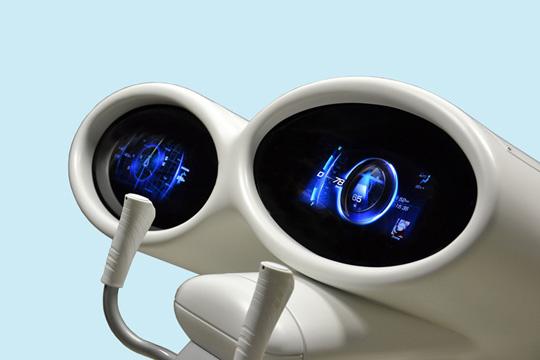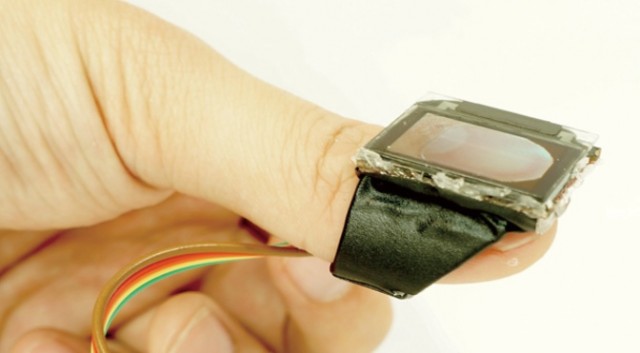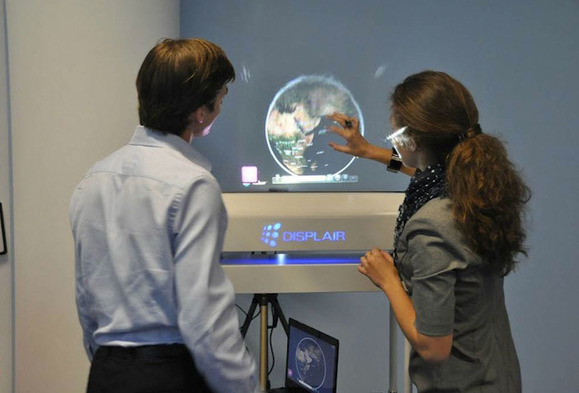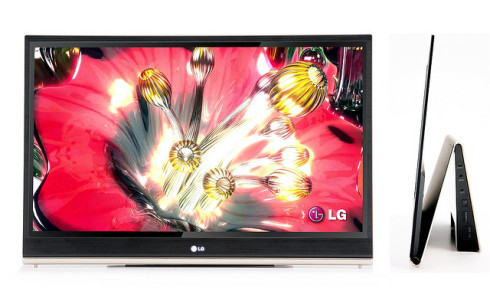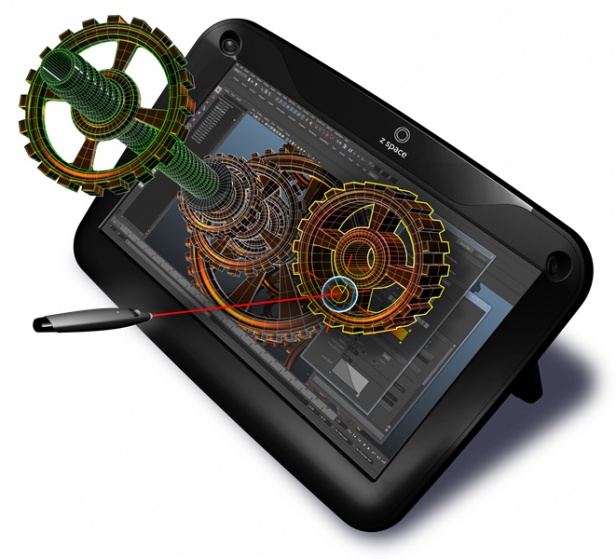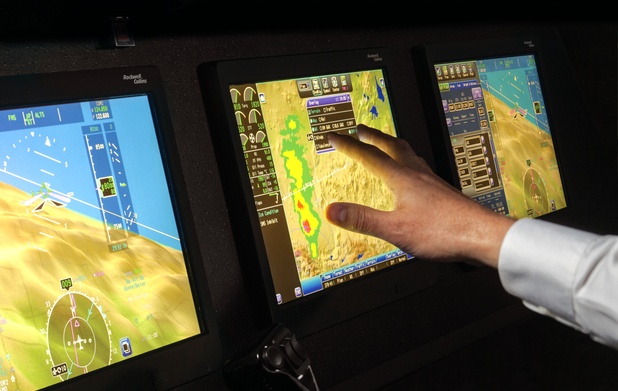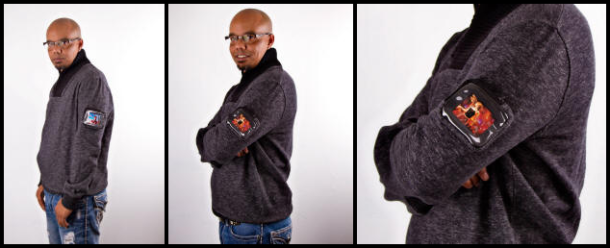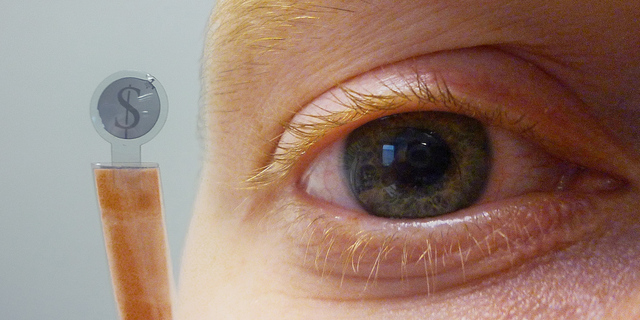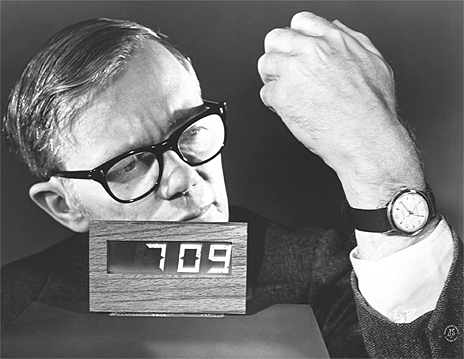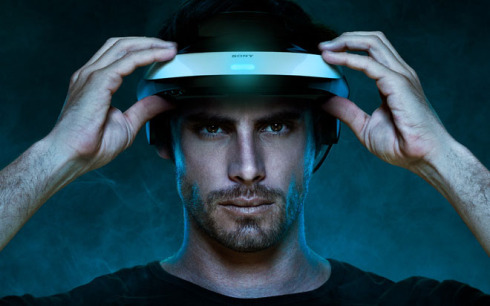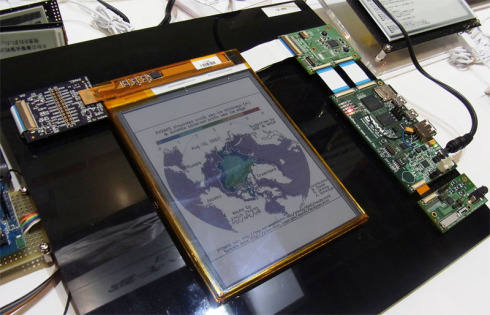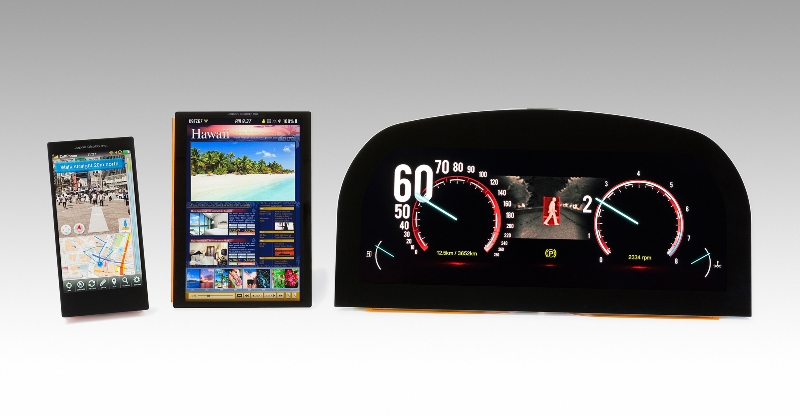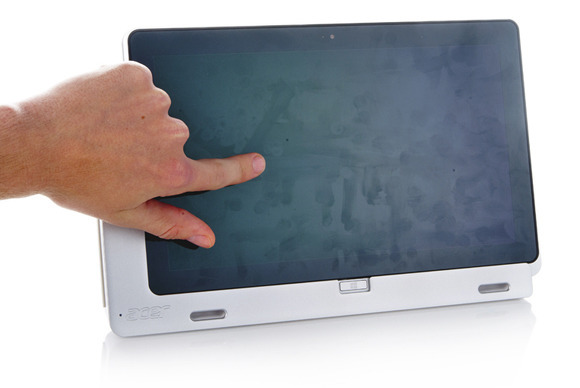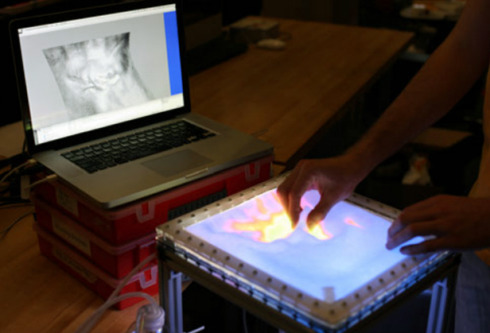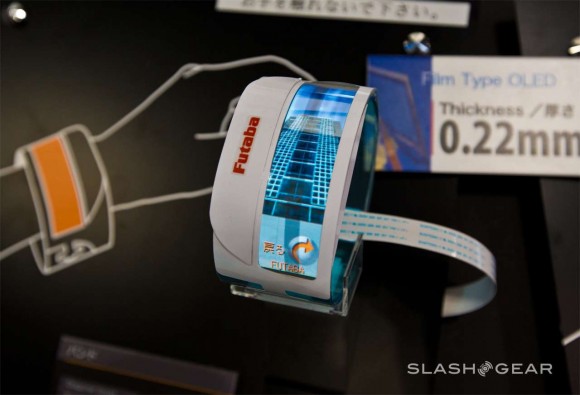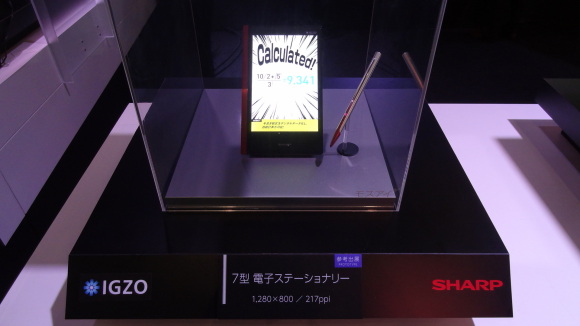Display Technology News Roundup 2.24.2013
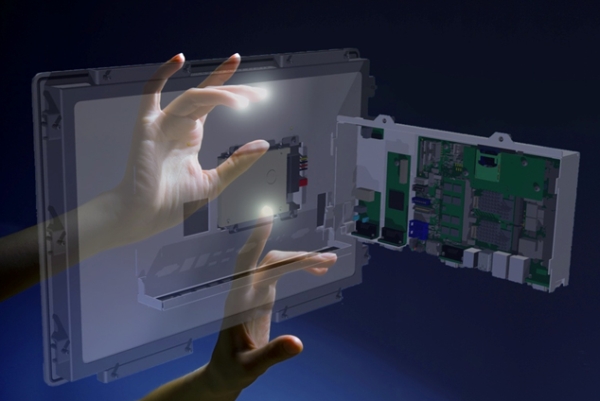
Image via Electronics News
HMI trends in industrial touch screens "Glass touch displays are also setting a new design trend which optically excels with its smooth and seamless glass surfaces. At the same time though this is where the challenge begins: Where robust designs are concerned, the glass panel cannot just be stuck on the back with an assembly kit, like, for example, is the case with ceramic cooking areas, in order to create a shock- and vibration-proof hold. Especially not when the opening of the housing on the machine or equipment has to offer comprehensive protection against dust and spray water." via Electronics News
Apple patent filing points directly to 'iWatch' concept with flexible touchscreen display "In another embodiment, the invention calls for a more robust design in which the flexible display is mounted directly to the bracelet and "framed" by a thicker, more comfortable fabric covering. Switches and critical electronics should also be resistant to fatigue, the patent notes, as the bracelet switches from a convex shape to a concave configuration depending on whether it is being worn by the user. When in its "curled state," or otherwise attached to a user's arm, the bracelet can take on the form of an uninterrupted screen. On-board sensors, like gyroscopes and accelerometers, would aid in orienting the screen's information toward the user." via Apple Insider
Polytron Unveils Transparent Smartphone Display Prototype "Taiwan-based Polytron Technologies are apparently already experimenting with a glass like smartphone with a multi-touch display.The prtotype device called Switchable glass is a conductive OLED display (organic light-emitting diode) makes use of liquid crystal molecules, that emit light in response to electric current. When the device is switched off the molecules take the form of a white cloudy like substance, which transforms the device to appear like glass." via Gizbot
Apple CEO blasts OLEDs as inferior tech – independent research shows he has a point "At a Goldman Sachs investor conference today, the Apple CEO dismissed the idea that the display technology is something Apple should adopt, noting “If you ever buy anything online and really want to know what he color is, as many people do, you should really think twice before you depend on the color from a OLED display.” Cook, asked if Apple would consider creating devices with larger displays, said that size and specifications are things companies focus on when they can’t “create an amazing experience.” That’s obviously a shot across Samsung’s bow, but it’s an arguably true evaluation of both the PC business and smartphone manufacturing." via ExtremeTech
Display database for engineers Search thousands of display panels by multiple characteristics and compare results side-by-side using the display database multisearch.
Touch panel market projected for 34% growth in 2013 "The financial crisis that started in 2008 left much of the IT industry hobbling worldwide. But only the touch panel market is enjoying a boom. Many new players are pouring into the industry, and those on the sidelines are waiting for the opportune moment to enter. As more players enter the competitive landscape, touch panel prices are falling rapidly. In addition, to gain competitiveness and to differentiate itself in the market has led players to develop and improve structure, technique and process, and seek out new materials." via Solid State Technology
LG Display betting on OLED to the tune of $657 million "Today we learned that LG Display has invested a whopping $657 million in the production of large OLED TV screens, a figure that will enable it to produce 26,000 mother glass sheets a month which are big enough to make six 55-inch screens per sheet. In other words: the company will be capable of churning out 156,000 panels per page turn on your calender. Since LG display is the largest flat-panel producer in the world, and since LG Electronics owns a 38 percent stake in it – it stands to reason that LG proper will be buying plenty of the new panels. This is news that should resonate industry-wide." via Digital Trends
Panasonic Says Plasma is still the best TV technology "Unlike LCD TVs which use an array of LEDs to illuminate their pixels, plasma TVs use glass panels containing over two million tiny cells filled with a mixture of inert gases. An electric current passed through these cells excites the gases, causing them to illuminate the pixels across the screen. This method of lighting is traditionally a lot better for motion reproduction, contrast levels and reducing 3D crosstalk than LCD tech. But they do suffer from a lack of brightness and come with bulkier chassis than their LED cousins." via TechRadar
ISSCC 2013: Imagers, MEMS, Medical and Displays "Significant R&D effort is being spent on active 3D imaging time-of-flight (TOF) applications to support requirements from autonomous driving, gaming, and industrial applications, addressing open challenges like background light immunity, higher spatial resolution, and longer distance range. Deep-submicron CMOS single-photon avalanche diodes (SPADs) have been developed by several groups using different technology nodes. They are now capable of meeting the requirements for high resolution, high timing accuracy by employing highly parallel time-to-digital-converters (TDCs) and small pixel pitch with better fill factor. ...This and other related topics will be discussed at length at ISSCC 2013, the foremost global forum for new developments in the integrated-circuit industry. ISSCC, the International Solid-State Circuits Conference, will be held on February 17-21, 2013, at the San Francisco Marriott Marquis Hotel." via Solid State Technology
Do you have content to share with Display Alliance? Anyone can post press releases, white papers, commentary, videos, and more in the open section.
Three-dimensional dancing bear shows the way to practical holographic display "Three-dimensional holographic displays can provide truly realistic images because they provide all the depth cues required by the human visual system and eliminate visual discomfort. However, the development of a practical holographic display system is limited by the availability of a spatial light modulator (SLM) with a large pixel count and closely spaced pixel element (small pixel pitch). Such a SLM is critical to achieve a large displayed image and a wide viewing angle.1 Over the past five years, we have developed three holographic display systems to combat this problem, each with an increasing degree of sophistication, resolution, and color reproduction quality." via SPIE
Improved Moisture Barriers for Organic Displays and Electronics are Coming "Materials used in OLED or OPV devices degrade rapidly when they contact oxygen or moisture, so they must be sealed tightly. In contrast, inorganic devices such as conventional TFT LCD or TFT-EPD survive the presence of humid air about a thousand times longer. In fact, EPD, such as electrophoretic E Ink displays, need some moisture so its encapsulation is meant to keep water in, rather than out." via Display Central
Key patent analysis on quantum dot displays released "The quantum dot recently emerged as a next-generation display material. Quantum dots, whose diameter is just a few nanometers, are semiconductor crystals. The smaller its particle is, the more short-wavelength light are emitted; the larger its particle is, the more long-wavelength lights get emitted. Considering that there are more advantages with the quantum dots over conventional light sources, it is not surprising that the quantum dot display gains a lot of attention." via Solid State Technology
Are you an engineer or have display expertise? Email jason@displayalliance.com to be featured in the interviews section.
Sharp develops technology to recycle glass from LCD TVs "Sharp Corp has developed technology for reprocessing the glass from used LCD panels, a discovery seen helping to lower recycling costs for consumers. ...Working with Osaka Prefecture University, Sharp found a method for turning the crushed glass from panels into zeolite via reactions in an alkaline solution. The firm foresees stable demand for the material, which is used as an absorbent to purify water and as a soil treatment, among other purposes. A 40-inch panel would yield roughly 200 yen (US$2.35) worth of zeolite." via Waste Management World
As touch screen market grows, Asia gains advantage on industry ""Demand is growing for thinner, light weight, and lower cost touch panels and devices. In addition, we see strong touch screen growth over the next several years in larger display applications such as convertible/hybrid notebook PCs and all-in-one PCs,” saidJennifer Colegrove, Vice President of Emerging Display Technologies at NPD DisplaySearch. “Over the next few years, in-cell, on-cell, and sensor-on-cover touch technologies will surpass the add-on type projected capacitive touch.” To meet consumer demand, technology companies are adapting to the market simply by adding touch screen abilities. Google, for instance, was rumored to be installing a touch screen in its next Chromebook. Although the conjecture came from a “leaked” video last week, it is inevitable that more laptops will feature touch screen technology." via Digital Journal
Apple's iPhone 5 Integrated Touch Display Technology Comes to Light and it loudly Screams it's Coming to all Macs Eventually "Specifically, rather than employ a separate, overlaid touch sensor panel over an LCD panel, embodiments of the present disclosure may incorporate integrated touch sensor components in-cell within display pixel cells of the LCD or on-cell above the display pixel cells. Among other things, these touch sensor components may include a conductive portion of in-cell black matrix, which also may shield light from one pixel from bleeding into another pixel." via Patently Apple
What do TV screens, bullet-proof vests and soap all have common? "Nematics were discovered in Germany in the late 19th century by virtue of their appearance under polarised light (as shown in the image), but no one realised they were more than a rather beautiful intellectual curiosity for another 50+ years. They are useful in displays because their alignment can be switched on and off by an electric field, so allowing individual pixels in a display to be separately addressed. Getting large areas of such displays to work perfectly with low energy consumption and high contrast are all technological issues; the basic physics (and requisite chemistry of the molecules) has now been known for many years. ...So, in the century and more since liquid crystals were first identified, they have transformed from an esoteric if attractive curiosity to a key class of materials in our everyday world. Things would look very different without them, as a quick appreciation of the screen on which you read this will make you realise." via The Guardian
What did you think about today's news? Leave a comment here and share your thoughts.
 News Roundup tagged
News Roundup tagged  3D,
3D,  Apple,
Apple,  Capacitive touch,
Capacitive touch,  Holograph,
Holograph,  LCD,
LCD,  LG,
LG,  OLED,
OLED,  Panasonic,
Panasonic,  Plasma,
Plasma,  Projected capacitive,
Projected capacitive,  Touchscreen,
Touchscreen,  Transparent
Transparent 